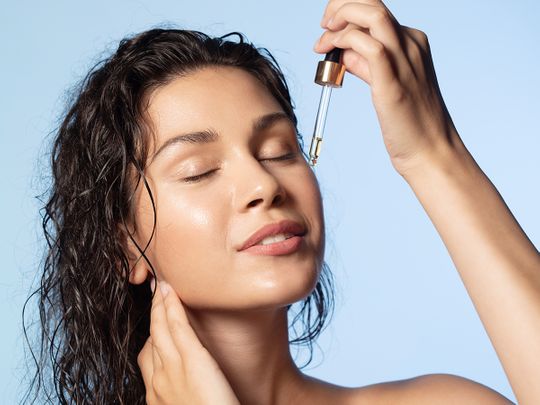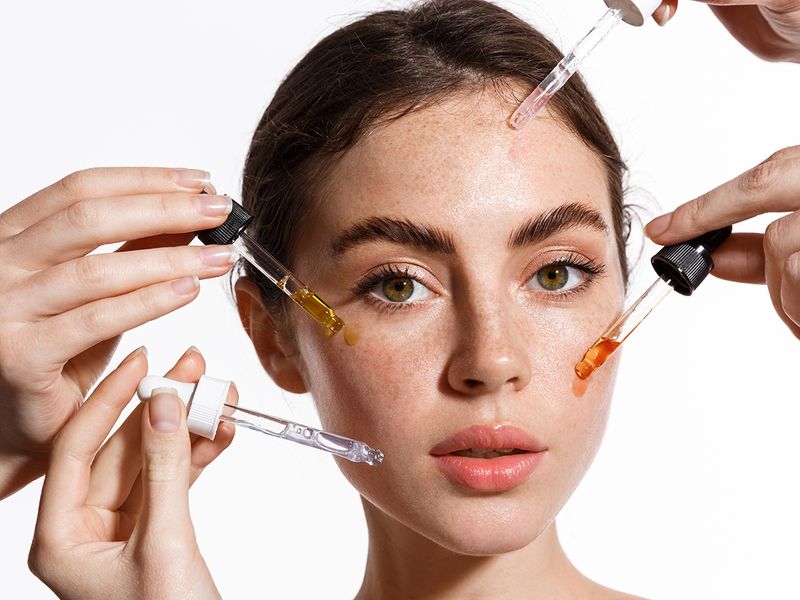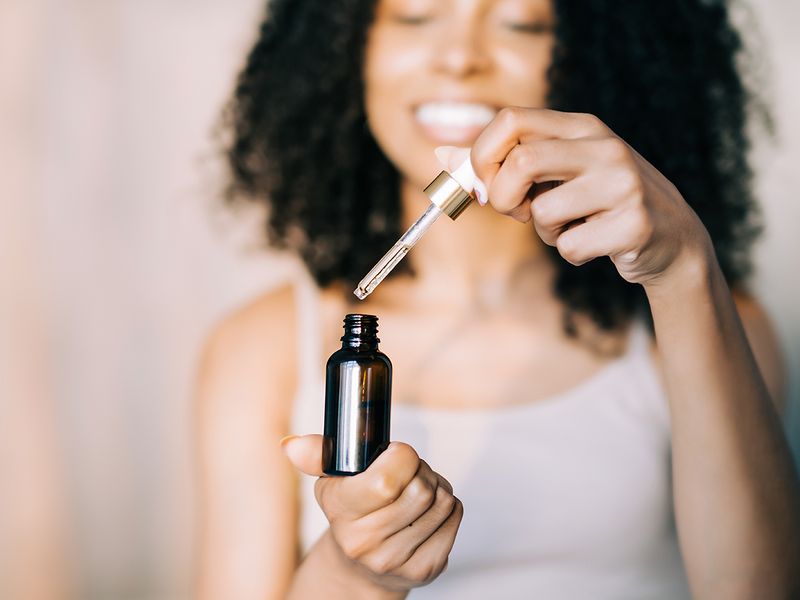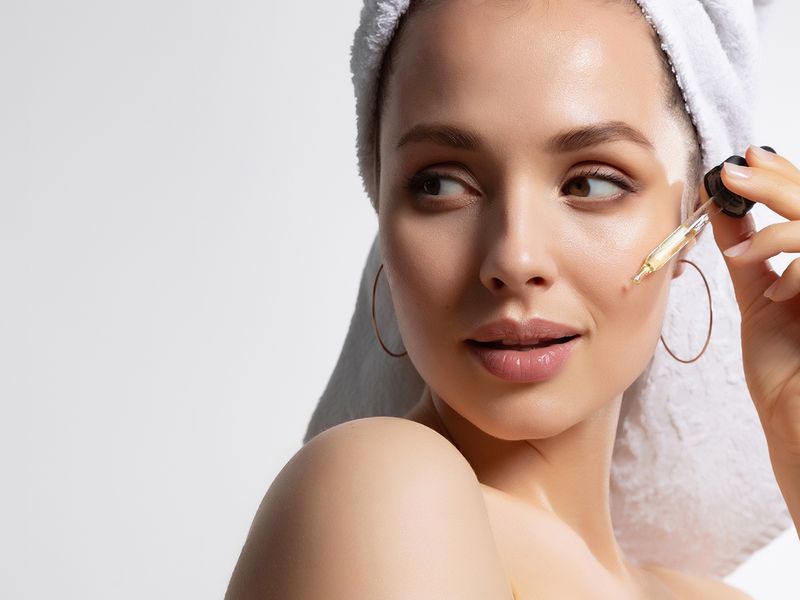
The skincare market is regularly flooded with new products. It’s a task to know which serum to buy, and when to use it. The terminology is even more confusing. With names like hyaluronic acid, salicylic acid, alpha-hydroxy acids and retinoids being strewn around casually, you almost begin to wonder if you’re in a chemistry laboratory.
“You need to know that the concept of layering products in skincare is based on the principle that each of these ingredients have unique benefits and work synergistically when used in combination,” says Kinga Szymanska, a Dubai-based laser and skin cosmetologist.
The basic skincare routine follows the process of cleansing, exfoliating, toning, serums, moisturising and sunscreen. It sounds easy enough and you may include several more steps, but you must remember that more products doesn’t ensure better results. Moreover, combining all products at once, can not only irritate your skin, but harm it as well.
To help you out, experts explain the place of each product and step in skincare:
Cleansing and toning

Let’s start easy. Why do we cleanse and tone?
As Szymanska explains, “Cleansing removes dirt, oil, and impurities, preparing the skin for absorption of the products.” This is followed by toning, which balances the skin’s pH levels. “Toners provide hydration and improve the effectiveness of subsequent products,” she adds. Toners have come a long way from just drying out pimples and acne, they now focus on hydration and nourishment, more than oil absorption. There are also new kinds of toners that have exfoliating elements as well, which helps with the next step in your skincare too.
What are exfoliants?
Exfoliants come in all shapes and sizes including serums, masks and scrubs. This should be done right after you’ve cleansed your face, as the alpha and beta-hydroxy acids help in removing dead skin cells from your face.
Let’s break it down further.
What are alpha hydroxyl-acids?
Commonly called AHA’s, these acids are commonly found in foods, like milk and sugarcane. Many of them are used in skincare treatments as they loosen the top layer of skin cells, which encourages the skin to grow more cells, increasing cell turnover. These are present in serums, toners, face pads and moisturisers.
They are a far healthier alternative, compared to abrasive brushes and scrubs, according to the UK-based health portal, Medical News Today. They benefit those with dry and flaky skin, and with long-term use, they promote collagen and elastin in the skin.
Beta-hydroxyl acids
Called BHAs, these are milder acids that are found in plants, tree bark and fruit. When it comes to skincare, they act as an exfoliant to brighten the complexion and prevent acne breakouts. BHA’s are far more effective when it comes to oily and acne-prone skin.
The good thing about the BHA’s is that they reduce the shedding of skin cells inside pores, chances of blockage, and break down blackheads and the whiteheads. You would have heard of salicylic acid, which is the most common BHA. It goes deep into your skin, clears out clogged pores, removes dirt, sebum and debris.
Dos and Don’ts with AHAs and BHAs
While everyone’s skin is unique, it is still advisable to use exfoliants 2 to 3 times a week, says Szymanska. Don’t apply them every day, as salicylic acids can be harsh to your skin, explains Fazeela Abbasi, dermatologist at the Euromed clinic. “Using the BHA’s every day doesn’t make sense, as it will be peeling off your skin. If you’re combining the BHAs and AHA’s, you need to see the percentage of how much is being used, and how much exposure to the sun you have. You need to see your lifestyle before you start marrying these ingredients together,” advises Abbasi.

Using the BHA’s every day doesn’t make sense, as it will be peeling off your skin. If you’re combining the BHAs and AHA’s, you need to see the percentage of how much is being used, and how much exposure to the sun you have. You need to see your lifestyle before you start marrying these ingredients together
Whenever you use an AHA, use a moisturising product right after, including sunscreen. Moisturising is important, as it will limit irritation, so look for ceramides, hyaluronic acid and glycerin, as it with sooth the skin, say experts.
The layering of serums

Serums are now the new additions on the skincare block. There are a great many serums out there, and each of them provide benefits to your skin. Just like other skincare products, there are different kinds of serums, ranging from lightweight to heavy, and this structure decides how you need to layer the products. The three most common actives are hyaluronic acid, niacinamide and Vitamin C.
Hyaluronic acid
This is probably the most common name in skincare. Plus, it has anti-ageing benefits too.
For starters, hyaluronic acid is a humectant that attracts and retains moisture, and hydrates the skin, explains Szymanska. As the levels of hyaluronic acid decrease as we grow older, we can use it in the form of supplements or skincare to hydrate the skin. It also prevents the signs of fine lines and wrinkles, and provides a more youthful look.
Niacinamide
A form of Vitamin B3, Niacinamide supports the outer layer of the skin by restoring skin moisture and prevents the loss of water. Moreover, it keeps the skin smooth and moisturized and protects the sun against ultra-violet rays. It can be mixed with most ingredients in skincare except Vitamin C.
Vitamin C
This is a powerful antioxidant that brightens the skin, reduces hyperpigmentation, and protects against free radicals. Apply it in the morning to clean the skin before sunscreen, advises Szymanska.
Retinol
One of the most misunderstood, yet most effective ingredients in skincare, retinol increases cell turnover, boosts collagen production, and regulates oil production. "Retinol is a derivative of vitamin A stimulates collagen production, reduce wrinkles, and improve skin texture," explains Eman AboElnagah, dermatologist at Medcare clinic, Dubai. "Apply it at night on clean, dry skin. Start with a low concentration and gradually increase usage to minimize any potential irritation better to used with compound skin and for anti-aging skin," she says.
“Use the Vitamin C during the daytime, and retinol at night time. The alternate night is a break as you give the skin rest, and use another active ingredient on the third night,” says Abbasi.
Mixing hyaluronic acid with niacinamide

This is a great pair, as both are water-treatments.
Always apply hyaluronic acid derivatives first, followed by niacinamide, which will help in hydration. Niacinamide helps regulate the sebum production and minimises the pores. Seal the actives by using a moisturiser.
Squalane with hyaluronic acid
Essentially, hyaluronic acid makes a great pair with practically all ingredients. Squalane, which has strong hydrating properties and maintains the skin’s moisture barrier, works with hyaluronic acid as a team. Hyaluronic acid attracts the water to hydrating the cells, and squalene builds the moisture barrier. So, apply the hyaluronic acid serum at first, follow it up with squalene.
Hyaluronic acid with Vitamin C
Both these ingredients have powerful anti-ageing properties and are found in many skincare products. After cleansing and toning, apply hyaluronic acid, and then apply Vitamin C as it will help in reducing dark spots and pigmentation. You can then follow it up with sunscreen, says Fazeela Abbasi, dermatologist at Euromed Clinic, Dubai.
You can also combine hyaluronic acid with ceramides, says Abbasi, as they both maintain hydration. Ceramides help reduce the water lost through skin’s surface, while hyaluronic acid draws water molecules towards the skin’s surface.
Don’t mix niacinamide with Vitamin C
Even though they’re both antioxidants, Vitamin C is not compatible with niacinamide. They should not be used one after the other, and their potency reduces when used together. Keep at least 10 minutes between each serum.
How to use retinol

There’s a reason why people are intimidated by retinol, so start slow. One thing to remember, don’t apply it on damp skin. If you do, the retinol will get absorbed deeply and cause irritation.
Retinol can be mixed with hyaluronic acid and ceramides as well as sunscreen. However, don’t mix it with Vitamin C, benzol peroxide or any of the AHA and BHA acids. In the case of the AHA and BHA acids, they are exfoliating ingredients that can cause further irritation if your routine already includes retinol, explains Abbasi.
As for Vitamin C, it protects the skin from environmental threats, while retinol repairs and rebuilds the skin. It’s best to keep these ingredients separate from each other, as they have different functions.
Benzol Peroxide
Benzol Peroxide can also irritate use your skin, as you should keep that separate from the AHAs and the BHAS, advises Abbasi.
A basic skincare routine entails…
“I would say come up with a basic skincare regime, with a good cleanser, moisturiser and sunscreen. If you want to add the actives ingredients, please be careful on how to combine them. Look at your lifestyle,” says Abbasi. “Look at your skin type, whether it is acne and eczema prone. See how much exposure you have to the sun. It’s complicated to sum it up for one type of skin, as there are so many skin types, for different age groups and weathers,” she says. “The rule is to try not to marry those ingredients at one specific time. Try and pace it out for 5-7 days and see if that active ingredient is okay for your skin, before introducing it into your skincare,” she adds.













